- Home
- Diana Wynne Jones
Reflections Page 15
Reflections Read online
Page 15
There was another kind of double thinking going on at the tennis too, at least among the commentators. If a male player hit the ball into the net when he didn’t need to, they went, “Oh, what an appalling shot to play at this stage in the game!” But if a female player did it was, “Oh well, women are expected to make mistakes.” I was pretty indignant about this, until I realized that the women players didn’t actually make many unforced errors. The commentators’ expectations were years out of date. The women’s expectations about themselves had changed. It is one of those many fields in which feminism has made an enormous subtle difference. Exactly the same change has come about in children’s books. About ten years ago, boys started being prepared to read books with a female hero. I found everything had gone much easier without, then, being able to say how or why. Females weren’t expected to behave like wimps and you could make them the center of the story. By that time anyway, I found the tactile sense of being female stopped bothering me—which may have been part of the same revolution—and it was a real release. I wrote The Spellcoats, told by a girl, and The Time of the Ghost, from the point of view of a female ghost, and then—although this one has only just been published—Black Maria, which explores the traditional roles of the sexes. After that, with a feeling that this was the big one, Fire and Hemlock.
Fire and Hemlock follows a girl, Polly, from the age of ten to nineteen. Such was my sense of release at that time, that the book was written at white heat—I had absolutely no trouble in tapping the deepest, most resonating levels and relating them to normal present-day relationships. The heat of writing pulled in poetry, myth, and folktales by the handful. Polly kept flicking from role to role as hero of at least a score of folktales: “Cupid and Psyche” or its dark obverse, “The Wicked Wedding,” “Tam Lin,” “Snow White,” “Thomas the Rhymer,” “Bluebeard,” “Cinderella,” “Sleeping Beauty,” “East of the Sun and West of the Moon,” and many more. It was amazing to me as I wrote to find exactly how many well-known tales have a female protagonist.
Reviewers—who seem to perform the same function as commentators at tennis matches—did not like this. The chief review of Fire and Hemlock ran, “This is a girls’ book and I don’t see why I should try to understand it.” End review. Last year Black Maria got much the same treatment. Things have not changed that much.
But back to the tennis commentators. Another thing that made me very indignant was their way of talking as if a tennis star was playing on his/her own. If the unfortunate opponent was not a star, then from the way they talked you’d think the hero was playing against a wall! In fact, on reflection, I saw the commentators had got this one right. Heroes are like that. Heroes of stories strive, fight, suffer, and maybe conquer. But whom they conquer or the reason for the fight is never so important. You remember the story for the hero, as if he or she carries the events of his/her heroism sort of in a cloud round them, like a nimbus. I think this is why there is always such a demand for another story about the same person—look at how many Robin Hood stories there are. These days it’s expected you will do more—at least write a trilogy—and this is something I find very hard to do. Except where Chrestomanci is concerned, I usually find that the end of the book is the end of the important things I have to say about the central character. Being that particular sort of person, they require that particular story and no other—that story is their own special nimbus, if you like. As an example of my difficulties, let me tell you that for the last ten years, I have been supposed to be writing the fourth book about Dalemark. And I couldn’t do it. That was because my then-publisher insisted that the next book should be about Brid and Moril—particularly Brid—and I knew that Cart and Cwidder had said most of what I wanted to say about Brid. It was not until I had changed publisher and been nagged by my agent that I began to think, well, maybe not Brid, but there are people in The Spellcoats and Drowned Ammet who have only half of their rightful story there. But how do you put into one narrative the other halves of stories that happened several thousand years apart? I had to leave that there for a while—I had other heroes queuing up inside my head for the stories that fitted them—and it was only last year that things clicked around and I did write that fourth book.
I do find, myself, that the hero, the protagonist, is the story. This is not to say that the other people in it are of no importance. Before I can write about anyone, I have to consider them as my close personal friends, even the baddies. I often feel acute sympathy for baddies—for instance, for Gwendolen in Charmed Life, who never had a chance to be anything else—but then, I’m peculiar that way. There was a time in my life when I had to hurry out of French farces in floods of tears because I was so sorry for the deceived husband.
But of course I feel much more sympathy for the hero, and so does everyone else. The hero has glamour, warts and all, and carries the story alone—rather like the tennis star apparently playing against a brick wall. Yes, the opposition is there, but at least half the struggle is with the hero’s own inner self. A tennis match makes a near-perfect paradigm here. You see the star stepping out confidently at first, sweeping away the other player. Then the other fights back and the star starts to lose. The hero’s confidence vanishes. You see the star fighting with himself, muttering, swearing, stamping about, and his face is contorted with agony at his own incompetence. The crowd loves him for this agony. He has to fight his own feelings in order to get into a frame of mind in which he can win. And he does. Somehow he scrapes up, if not confidence, courage, calms himself with a huge, visible effort, and raises his game. Slowly he claws back the advantage, gets on top, and then by the end the other player doesn’t know what has hit him.
Watching this agony of tennis stars in action, I recalled an interesting fact. The word “agony” also makes part of the word “protagonist.” And it is the same word in origin as “action.”1 It is as if the facts about heroes are built into our language—if you take action of any kind, you are going to suffer. But the whole complex of meanings round these words entails a great deal more than simply “You can’t make an omelette without breaking eggs.” “Agony,” which means, in origin, a death struggle, is a word for both external pain and internal strife (as in “an agony of indecision”). “Action,” derived from the verb “to act,” can mean decisive doings of a physical kind, but it is usually partly in the world of ideas, as when a government acts to prevent inflation by raising interest rates, which is a seminotional thing to do, even if it does have physical consequences. And the other main meaning of “act” is, of course, to take part in a stage play—where the actor often enacts the agony of a hero. Interestingly, the actor is said to play a part in this play. If you think around the implications of this cluster of meanings, you can see that what an audience, or a readership, expects from a hero is a very serious form of a game, in which the hero is expected to struggle on two fronts, externally with an actual evil, and internally with his/her own doubts and shortcomings. The hero, out there as scapegoat, has to do the suffering for everyone.
Another thing that makes a hero is, of course, a miraculous origin. I was intrigued to find that the media do in fact treat tennis stars as heroes even in this. Large numbers of them are said to have extremely ambitious parents, so ambitious that they dedicated their child to tennis from the earliest possible age. Some are said never to have gone to school so that they could concentrate on the career their parents had chosen for them. This makes me think of that passage in H. G. Wells’s First Men in the Moon, where the narrator discovers a society of large, intelligent lunar ants and, in the course of a tour of the anthill, comes upon numbers of juvenile ants who are obviously in acute discomfort with portions of their anatomies squeezed into strange-shaped jars. These juniors, he is told, are being shaped into the forms required of various specialist workers.
I suppose the most obvious version of this origin is the dedication of Samuel to the temple. Real life or not, tennis children are pure folklore. But those players who were not ded
icated are treated as mythical too, as if they sprang forth fully formed, like Minerva from Jove’s head, or simply lay about doing nothing—which equates with the folklore motif of the Bear’s Son, who did nothing but lie by the hearth until heroic deeds were required. Or there are players who started poor as church mice and raised themselves to fame and wealth by tennis—which is a hundred stories from “Puss in Boots” on. These days you don’t get the princess and half the kingdom, but you do get a great deal of money and attention, which is probably equivalent.
All these notions and expectations about heroes were in my mind when I wrote The Lives of Christopher Chant. Christopher, the future enchanter Chrestomanci, has tennis parents. In a big way. Both his mother and his father wish to shape him into a different kind of star, but they are each so concerned with their separate ambitions for him that they entirely neglect the welfare of Christopher himself. This much comes from real life: Christopher was based on the son of ambitious parents I know, a poor boy who eventually committed suicide, being unable to stand the pressure they put on him. Christopher’s version of suicide is to scramble about in the spirit void of the Place Between and keep on losing lives—luckily he has nine. But he is also the other kind of hero, the Bear’s Son, in that he seems totally incapable of working magic and therefore incapable of fulfilling his parents’ ambitions for him. Significantly, it is Christopher’s father who had caused this incapacity. I made the lifting of this inhibition by Dr. Pawson as funny as I could. There seemed no better way to express the sheer joy of release.
But before this, Christopher has fallen under the sway of his dreadful uncle and become a deeply flawed hero. It is not just that he has been conned into criminal activity. The uncle, and the governess who is his accomplice, have dug their way into Christopher’s private worlds where he travels in spirit—in other words, they have got at the center of his personality, where Christopher’s own imagination had been freely at work—and perverted this for their own ends. In a way, this uncle and governess stand for Christopher’s actual parents and what they have done. The governess, in addition, makes sure Christopher has no confidence in himself. For a while, Christopher holds to his central being because he has met the Goddess, who is a child and, like himself, dedicated—in this case to be the personification of the Goddess in an actual temple. Christopher strongly identifies with her, rightly: not only is she an even more extreme case of tennis child than he is, she is also standing for the powerful, submerged female part of himself. But there comes a point when even the Goddess lets him down. This happens when a person is rendered so unhappy that they lose touch with their inner self. This, I suspect, is the point where the boy Christopher was based on killed himself. But Christopher is a hero. At this point he has to raise his game or lose—so he raises his game and, in doing so, realizes that his confidence has been undermined. Now he is ready to fight and win.
He has to do this twice. Once he knows he has to, he can defeat his uncle quite easily in physical terms, but before that he has to cope with what has been done to him internally, by uncle and governess and parents. So he has to set out into the hidden worlds again, to the world he has been unable to enter before, and there, with help from his other half, the Goddess, to face down the fearsome Dright. Here he at least comes off best. He does not kill the Dright—he loses another life to him, in fact, for the kind of damage the Dright stands for lasts for the rest of your life. But Christopher does defeat him and gains a little understanding. Then he can come back into his own world and defeat his uncle.
I mentioned earlier that my book Black Maria was not published when it was written. It was written rather before The Lives of Christopher Chant and concerns itself with the same complex of ideas, except that it has a female hero, Mig, and the part that is played by the Goddess as Christopher’s hidden half is here played by Mig’s brother, Chris. Because it was written fairly early on, at the time I was finding a new freedom to write from a female point of view, it concerns itself with the way the traditional female role affects a female hero.
But it was not my publishers who decided to leave this book till later—though they often do. For instance, Dogsbody was written a year after Power of Three and my publishers insisted on reversing them, and the same happened with Fire and Hemlock and Archer’s Goon, which were in fact written almost side by side. No. I suppressed Black Maria. I felt it was too frightening. A friend of mine who writes horror comics agreed. There was nothing, he said, that inspired him with more fear and horror than a polite tea party given by a dear old lady—an ordinary old lady, not a witch. And Aunt Maria is a powerful and unscrupulous witch, tea parties and all. She takes the place of the ambitious parents in The Lives of Christopher Chant, for she is secretly grooming Mig to follow her as the sorcerous queen of a small seaside community. Aunt Maria embodies a certain type of female, dominating by pretending to be an invalid and by barefaced manipulation, dividing things into men’s business and women’s business, and pretending to worry. In her world, it’s a woman’s place to seem to worry. This is where I got frightened. In a nightmare way, strength becomes weakness and, vice versa, right becomes wrong, and most other values are skewed too.
But Aunt Maria was based on a real person—in fact, there seem to be rather a lot of her; my editor met five women exactly like Aunt Maria on her way down the street after finishing the book—and I thought, People have to cope with her every day. Let’s show them a hero coping with her.
Mig has to grope her way through Auntie’s moral miasma. At first, like Christopher Chant, she succumbs—at least to the propaganda about her role, and can do nothing but write her real opinions in her journal. She leaves the active male role to her brother, Chris. Chris is forced by the same propaganda into a near-parody of an aggressive adolescent boy—and some of the things he says made me scream with laughter while I wrote them—until Aunt Maria, having driven him too far, blandly turns him into a wolf. This leaves Mig in the position of the lonely folktale princess who has to turn her brothers back into human form. Mig has to overcome real terror and the sort of intellectual sloth induced by the role Aunt Maria has thrust upon her. But she does it, and raises her game. Here she, like Christopher Chant, finds that she has to call on something buried and hidden, in this case a man. A man called Antony Green has been buried alive, on Aunt Maria’s orders, twenty years before. He is even more than the sleeping, buried part of Mig herself: he is the buried part of the whole community, their life of the imagination, without which no one’s intelligence can work well enough to see through Aunt Maria’s moral miasma. Mig, in raising her game, has sensed that there is something other and better, and this is what she has to go for.
This sense of something other and better is what heroes give us a glimpse of when they raise their game. And this is why we need heroes. Younger children seem to understand this fairly readily, I think, because when you are nine or ten your life is lived at a high emotional pitch that is itself only a step from the heroic mode. Take a look at any school playground and you’ll see what I mean.
My youngest goddaughter, at the age of eight, was always very fierce when she came across injustice. On one occasion, she saw a large bully in the playground beating up a younger, and disabled, child. She suddenly became a knight errant and, although much younger and slighter than the bully, she launched herself at him with such ferocity that she took him by surprise and knocked him down. Then she hammered his head on the playground. The bully naturally told the teachers that he had been attacked without provocation, and my goddaughter was punished. She was undaunted. She told me afterward that she had been quite right to attack. “It was so unfair!” she proclaimed. “It made me angry.” She was terribly unhappy, but she was glowing with her deed too. She was in touch with the other and better, all right—she was Boadicea, Brunhilde, Britomart, you name it.
When this girl reached puberty, she lost touch a little with her heroic sense. As a teenager or young adult, your emotions may be at an even higher pitch, but
the onset of the additional emotions to do with sex sort of scramble the other feelings and you become a rather frantic muddle for a while. This is when people need a hero to follow. Everyone that age has a fierce pride and doesn’t want to be a failure, and a hero gives you this sense of something other and better, so that you can keep your head above the frantic muddle. What you look for is a sort of blueprint of how to manage.
Then, with the aid of whatever blueprint they choose, people school themselves out of the emotion—and often out of the pride that went with it. They become ashamed of the whole lot, including heroes. I think this is a pity. But I take comfort from the way people of all ages will follow a tennis match breathlessly—even if they’re not actually interested in the game. We all need an ideal. And we all have times when we need to raise our game. Heroes make us know that this is possible.

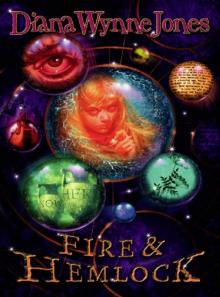 Fire and Hemlock
Fire and Hemlock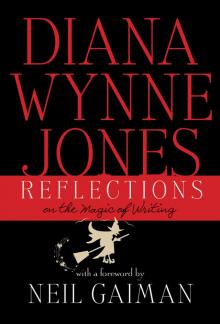 Reflections: On the Magic of Writing
Reflections: On the Magic of Writing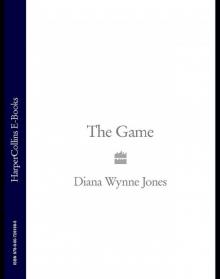 The Game
The Game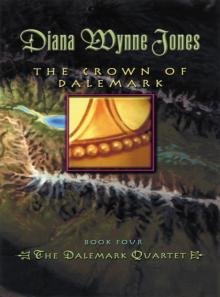 The Crown of Dalemark
The Crown of Dalemark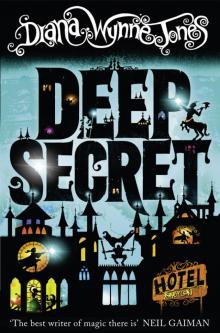 Deep Secret
Deep Secret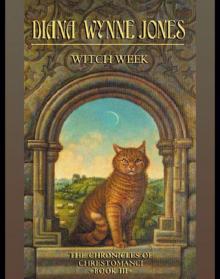 Witch Week
Witch Week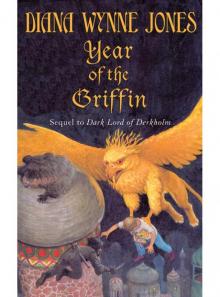 Year of the Griffin
Year of the Griffin Wild Robert
Wild Robert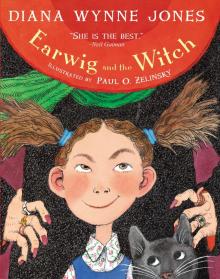 Earwig and the Witch
Earwig and the Witch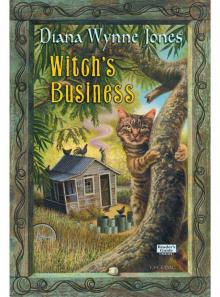 Witch's Business
Witch's Business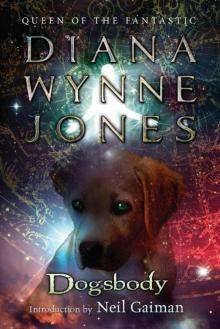 Dogsbody
Dogsbody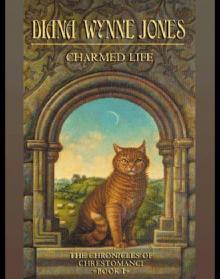 Caribbean Cruising
Caribbean Cruising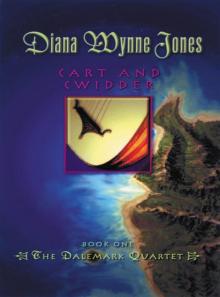 Cart and Cwidder
Cart and Cwidder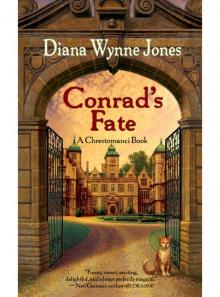 Conrad's Fate
Conrad's Fate Howl's Moving Castle
Howl's Moving Castle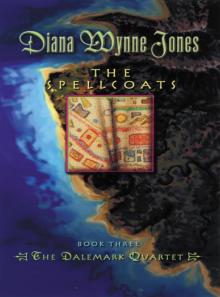 The Spellcoats
The Spellcoats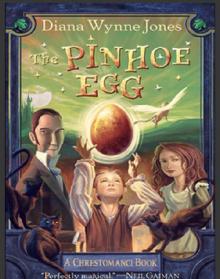 The Pinhoe Egg
The Pinhoe Egg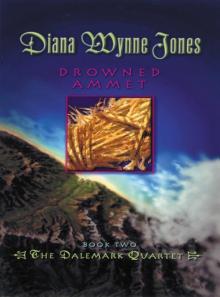 Drowned Ammet
Drowned Ammet The Ogre Downstairs
The Ogre Downstairs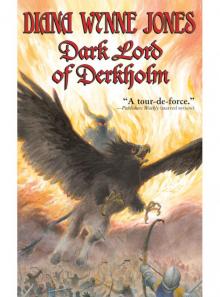 Dark Lord of Derkholm
Dark Lord of Derkholm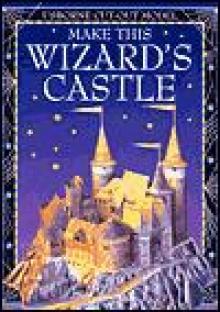 Castle in the Air
Castle in the Air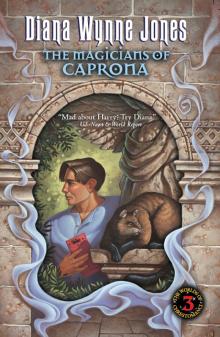 The Magicians of Caprona
The Magicians of Caprona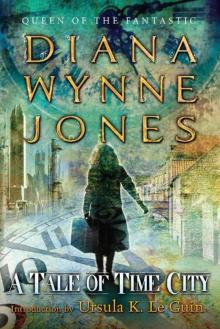 A Tale of Time City
A Tale of Time City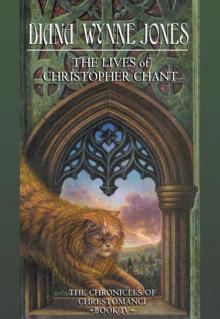 The Lives of Christopher Chant
The Lives of Christopher Chant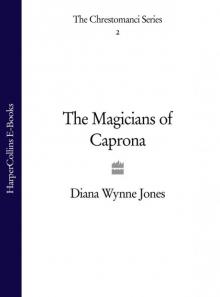 The Magicians of Caprona (UK)
The Magicians of Caprona (UK)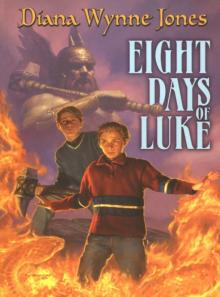 Eight Days of Luke
Eight Days of Luke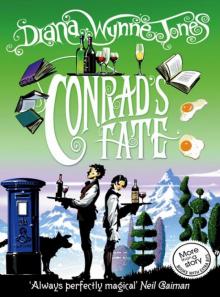 Conrad's Fate (UK)
Conrad's Fate (UK)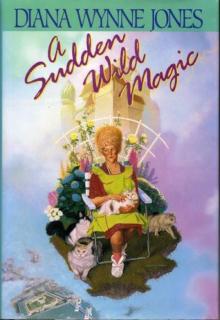 A Sudden Wild Magic
A Sudden Wild Magic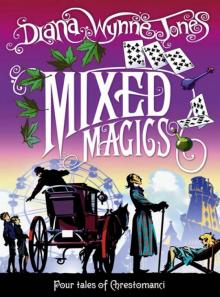 Mixed Magics (UK)
Mixed Magics (UK)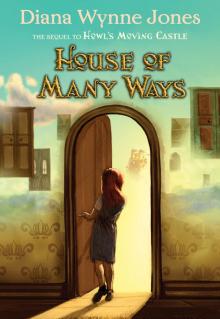 House of Many Ways
House of Many Ways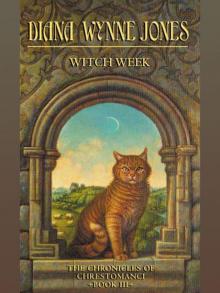 Witch Week (UK)
Witch Week (UK)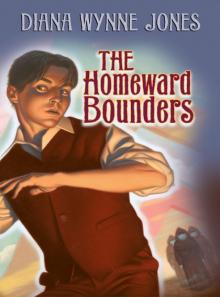 The Homeward Bounders
The Homeward Bounders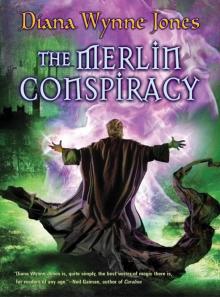 The Merlin Conspiracy
The Merlin Conspiracy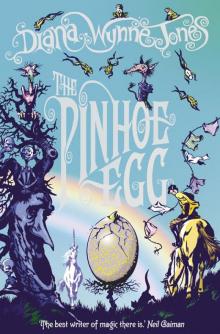 The Pinhoe Egg (UK)
The Pinhoe Egg (UK) The Time of the Ghost
The Time of the Ghost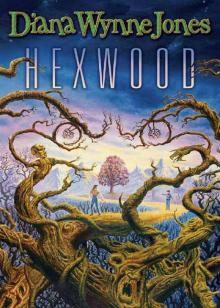 Hexwood
Hexwood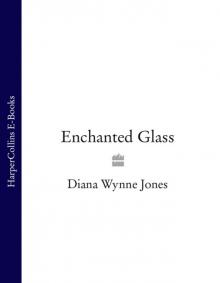 Enchanted Glass
Enchanted Glass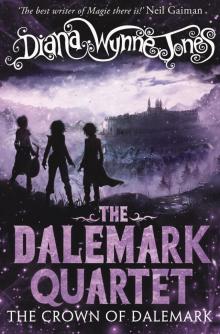 The Crown of Dalemark (UK)
The Crown of Dalemark (UK)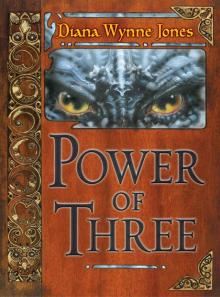 Power of Three
Power of Three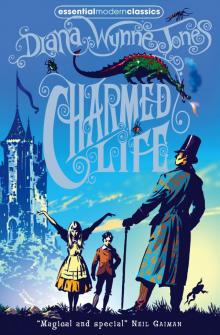 Charmed Life (UK)
Charmed Life (UK)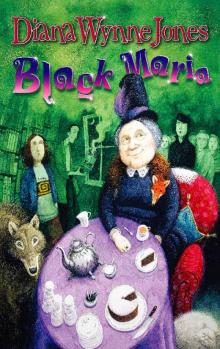 Black Maria
Black Maria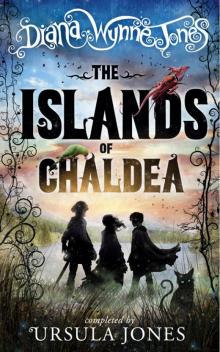 The Islands of Chaldea
The Islands of Chaldea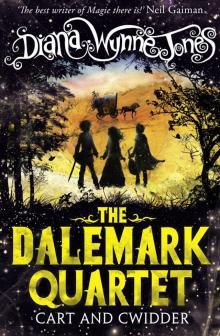 Cart and Cwidder (UK)
Cart and Cwidder (UK)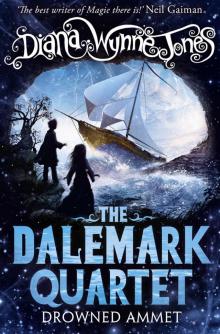 Drowned Ammet (UK)
Drowned Ammet (UK)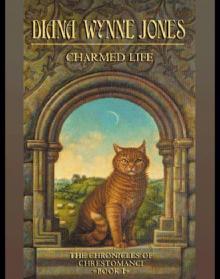 Charmed Life
Charmed Life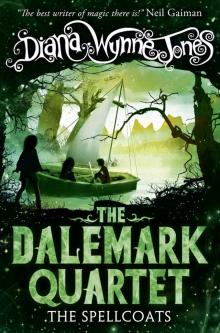 The Spellcoats (UK)
The Spellcoats (UK)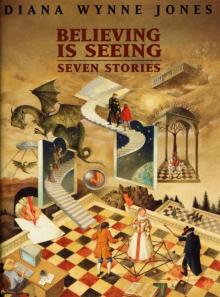 Believing Is Seeing
Believing Is Seeing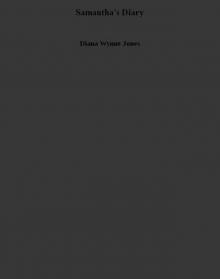 Samantha's Diary
Samantha's Diary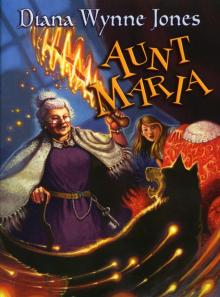 Aunt Maria
Aunt Maria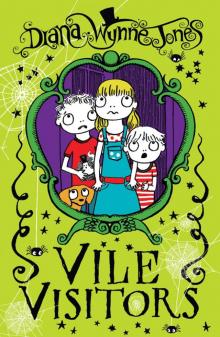 Vile Visitors
Vile Visitors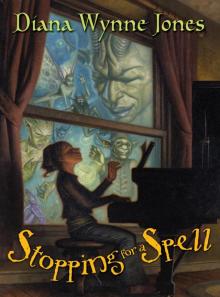 Stopping for a Spell
Stopping for a Spell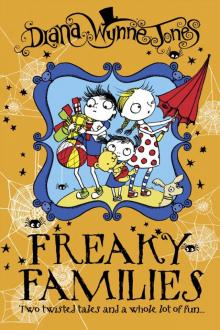 Freaky Families
Freaky Families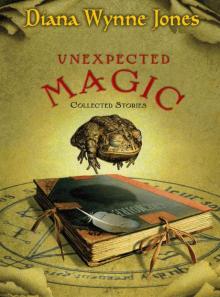 Unexpected Magic
Unexpected Magic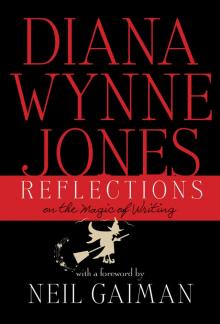 Reflections
Reflections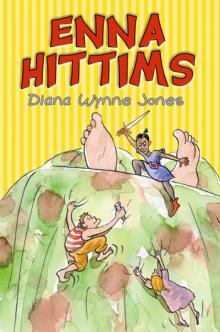 Enna Hittms
Enna Hittms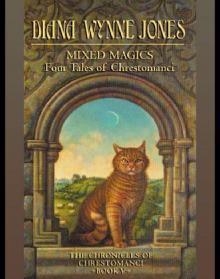 Mixed Magics: Four Tales of Chrestomanci
Mixed Magics: Four Tales of Chrestomanci